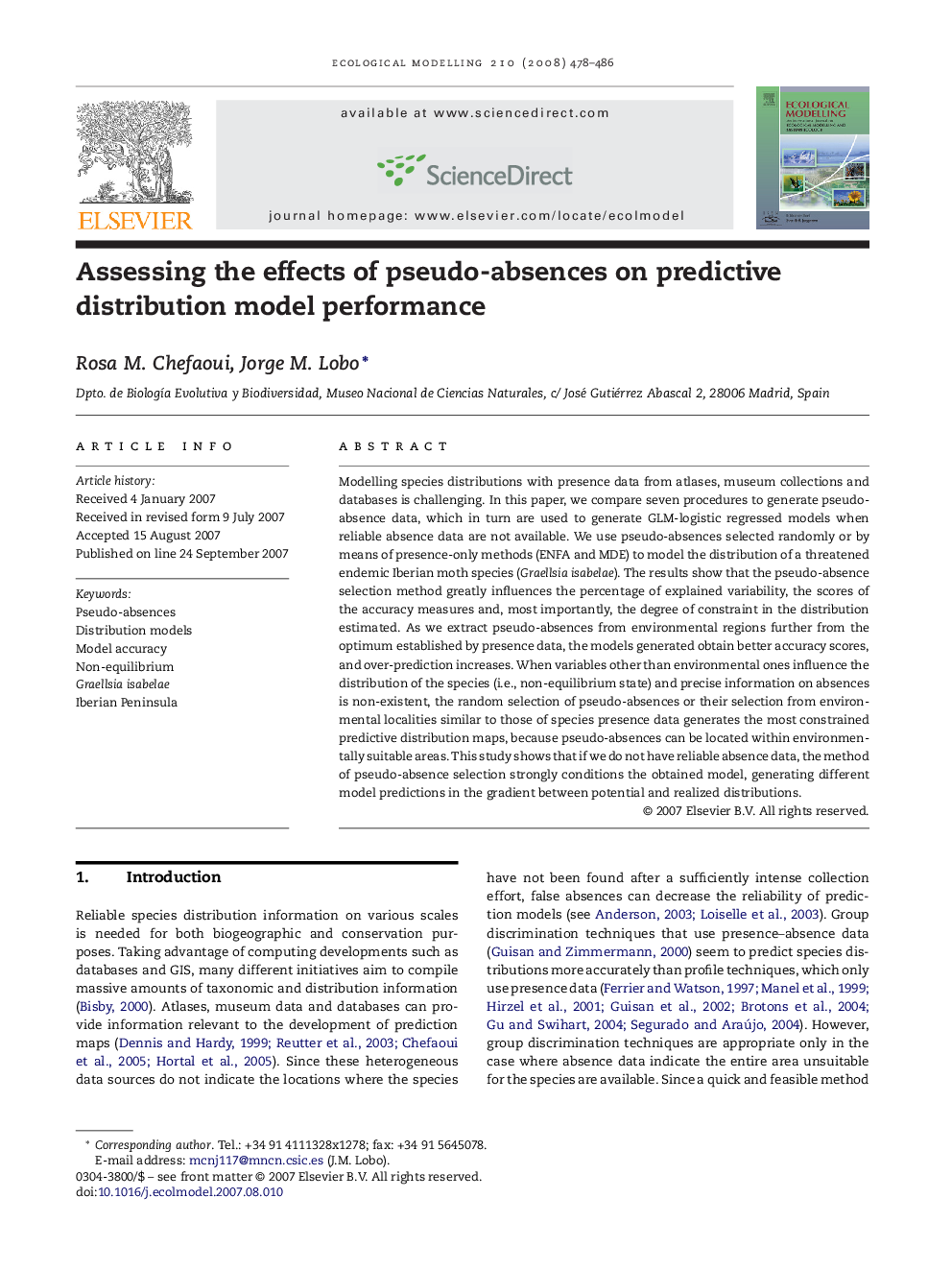| کد مقاله | کد نشریه | سال انتشار | مقاله انگلیسی | نسخه تمام متن |
|---|---|---|---|---|
| 4378234 | 1617539 | 2008 | 9 صفحه PDF | دانلود رایگان |

Modelling species distributions with presence data from atlases, museum collections and databases is challenging. In this paper, we compare seven procedures to generate pseudo-absence data, which in turn are used to generate GLM-logistic regressed models when reliable absence data are not available. We use pseudo-absences selected randomly or by means of presence-only methods (ENFA and MDE) to model the distribution of a threatened endemic Iberian moth species (Graellsia isabelae). The results show that the pseudo-absence selection method greatly influences the percentage of explained variability, the scores of the accuracy measures and, most importantly, the degree of constraint in the distribution estimated. As we extract pseudo-absences from environmental regions further from the optimum established by presence data, the models generated obtain better accuracy scores, and over-prediction increases. When variables other than environmental ones influence the distribution of the species (i.e., non-equilibrium state) and precise information on absences is non-existent, the random selection of pseudo-absences or their selection from environmental localities similar to those of species presence data generates the most constrained predictive distribution maps, because pseudo-absences can be located within environmentally suitable areas. This study shows that if we do not have reliable absence data, the method of pseudo-absence selection strongly conditions the obtained model, generating different model predictions in the gradient between potential and realized distributions.
Journal: Ecological Modelling - Volume 210, Issue 4, 10 February 2008, Pages 478–486